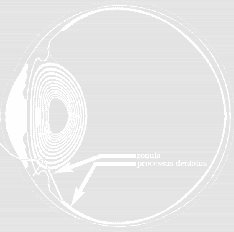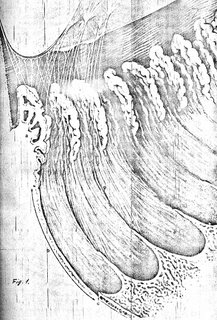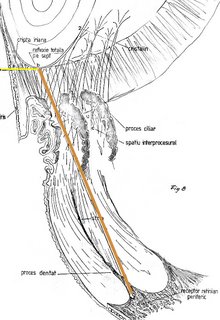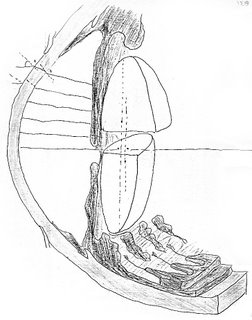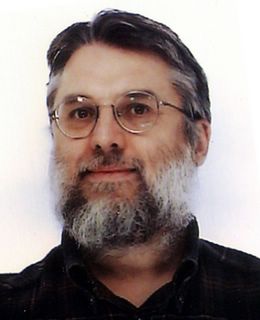Survival and Health in Iris Studies
by Dr Dan Waniek, MD
Copyright © 2013
All Rights Reserved.
Copyright Requests Here Please !
Vindication, instead of valediction...
Dear Jon,
Hope you are in good health now and enjoy the fruits of your seminal work. I for one, am fine, with my guaranteed brand new liver. We believe it's high time to take advantage of your extraordinary work experience.
01. We would like YOU to register a patent for our "ancient" Anterior Pole and Iris Optimal Image Directivity Actuator (APIOIDA) as the ultimate accomplishment in field of iris medical imaging. If you recall our discussions, a real-time infrared camera pupillometric actuator ordered shooting sessions for the real iris cameras which phisically scanned each eyeball meridian like orbital sattelites, pushing field depth and autofocus to the physical limits.
02. Images were seamlessly patched together with tiling software until remote planetary imaging quality was surpassed. Instant autofocus during orbiting sessions as defined and threshhold triggered by preset pupillary position and pupil diameter brought image acquisition latencies in the order of 10-100 ms which proved good enough for quality purposes. Resolution was nearly perfect and ten micron sized detail was clear. Images attained hundreds of million pixels of full color depth. Pantone charts where imaged and included in each frame for colorimetric calibration. But why should we pursue all these efforts ?
03. For trendsetting groundwork, that's why. You remember our fundamental discovery (in the 1980s) of iris transparency patterns and peripheral retina serratal alignment with ciliary valleys in pars plicata corporis ciliaris. This alignment exists for minimal but efficient photoreception and transduction in the processi dentati retinae. This has been confirmed in vivo by Lennart Nilsson, your Swedish doppelgänger...
04. Overall, the patterns of iris transparencies (PITS) become patterns of ora serratal stimulation. The more hippus exists, the more stimulated the tips of the dentate processi become. The greater becomes the area of the Fuchs crypts during myosis, the thinner and more transparent they are, and the larger the trans-iridial beam.
05. All of this is indeed harmoniously coherent since the dentate processi become larger and thicker towards the latitude of 45 deg anterior hemispheral parallel and fuse there in the depths of the serratal gulfs. The iris acts as an imperfect, locally transparent optical diaphragm, but also as a nearly perfect morphologically variable and always updated (actuated) coder.
06. The iris correspondent projections of seventy or so body organs and functional systems become a living programming language for light stimulation in the ora serrata, and phototransduced homeostatic ora serratal stimuli (PHOS) adjust via the optical pathways the greater homeorrhexical tasks in the non-visual cortex. What a feedback ! "Should your eyes be healthy, your whole body will be full of Light" (Matthew, 6.22, KJV)
07. Bernard Jensen didn't understand the physiological implications and amplitude of his morphological iris science but he had a hint with your and our help, since he grasped the significance of computer aided "Iridonomy" which is to iridology what astronomy is for astrology. Unfortunately Jensen wasn't top brass, YOU are !
08. The fuss for iris biometrical data increases the number of physical databases of low quality iris images. But even at such superficial level they will ultimately help recognize the inherently unavoidable endogenous variability of iris patterns, which are nothing else but for ever actuated if delicate patterns of iris stromal, aptly coded, significantly variable phisiologically useful transparencies.
09. John Daugman quite understandably hates us. Not only he faked the biometrical recognition of the famous Afghani girl's right iris, but he couldn't say a word about latanoprost-induced new iris patterns... He has revised the algorithms used in iris biometry since he ceased to answer our legitimate questions, but at that time at least, he had no knowledge whatsoever about ours and your own advances in iris imaging systems.
10. Perhaps it's time to break through all these layers of malevolent iris science and prove how beautiful is the iris patterns beauty useful !
11. I will bring the money and hope to take home a custom unit designed by you, and comprising :
1. Your fine LCB: Lens-Mount Coaxial Biometric Illuminator
2. A Nikon af-s vr 105 mm f/2.8g if-ed mc macro
3. The Nikon d800e box
( http://www.amazon.com/Nikon-D800E-FX-Format-Digital-Camera/dp/B005OL2ID2 )
4. The CRCS-TTB-AF chinrest which easily breaks down into a 12” x 9” x 3.5” space for portability.
5. A leather case for all these jewels to avoid Paypal, Banks, Customs, questins and stuff...
12. In the mean time I will negotiate with my reactivated dream team members, a plan for the future of iris studies. After thirty years of fundamental and fruitful iris search and eye research efforts, perhaps we won, afterall.
13. As long as we aren't finished ourselves, how could our work be finished ? Congratulations, dear Jon for being so wise and stubborn. I'm pretty sure your lifetime work, devotion and know-how are now vindicated. As Leonard Cohen once sang :
"There is a crack in everything (iris stromal)"
"That's how the (trans-iridial) light gets in"...
Take care, Jon !
Yours,
Dan
Wholeheartedly mini-iPadded
S'il vous plaît, pardonnez le modérateur ! Il a la moderation intense, mais pas vraiment d'intensité dans sa modération. Restez polis, patientez, et vous pouvez tout dire ici chez nous ! Soyez les bienvenus ! Allez-y ! Vos commentaires bienvenus seront tous lus et publiées ! Restez spartiates, mais polis, et vous pouvez tout dire !


